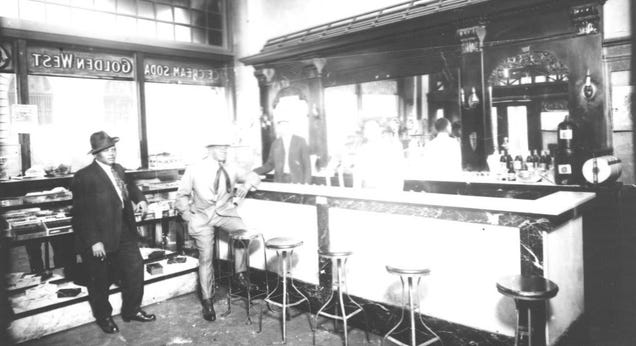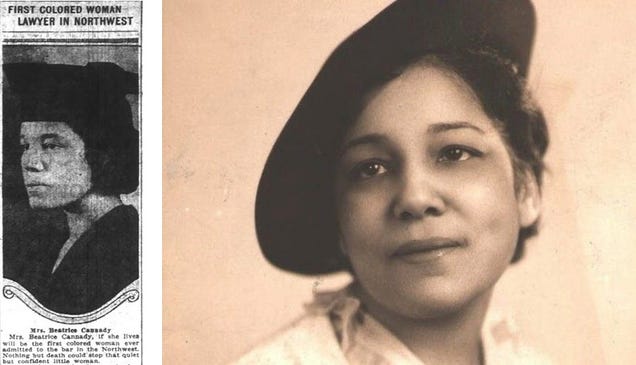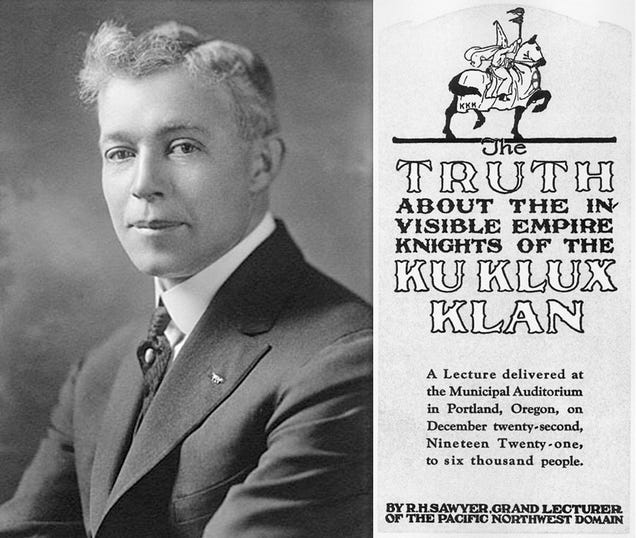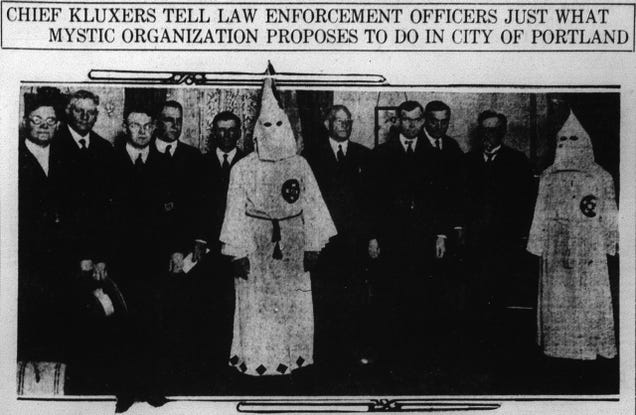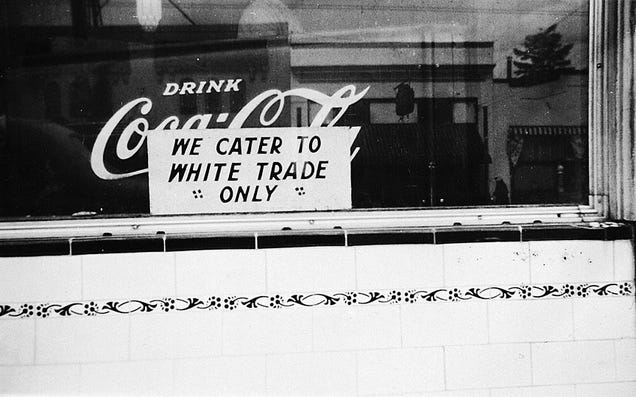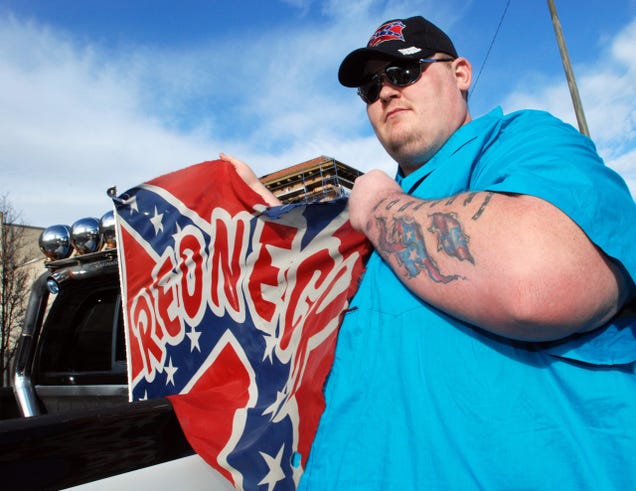theworldismine13
God Emperor of SOHH
Oregon Was Founded As a Racist Utopia
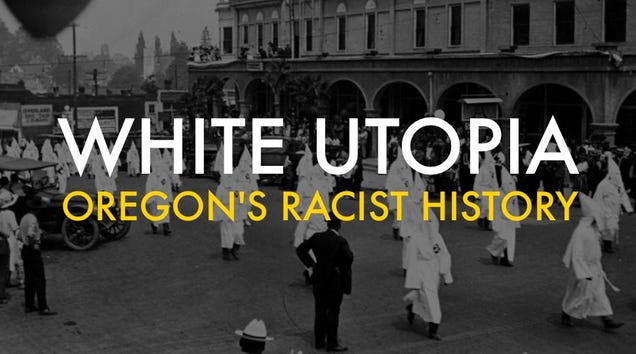
1
When Oregon was granted statehood in 1859, it was the only state in the Union admitted with a constitution that forbade black people from living, working, or owning property there. It was illegal for black people even to move to the state until 1926. Oregon's founding is part of the forgotten history of racism in the American west.
Waddles Coffee Shop in Portland, Oregon was a popular restaurant in the 1950s for both locals and travelers alike. The drive-in catered to America's postwar obsession with car culture, allowing people to get coffee and a slice of pie without even leaving their vehicle. But if you happened to be black, the owners of Waddles implored you to keep on driving. The restaurant had a sign outside with a very clear message: "White Trade Only — Please."
It's the kind of scene from the 1950s that's so hard for many Americans to imagine happening outside of the Jim Crow South. How could a progressive, northern city like Portland have allowed a restaurant to exclude non-white patrons? This had to be an anomaly, right? In reality it was far too common in Oregon, a state that was explicitly founded as a kind of white utopia.
America's history of racial discrimination is most commonly taught as a southern issue. That's certainly how I learned about it while going to Minnesota public schools in the 1980s and 90s. White people outside of the South seem to learn about the Civil War and civil rights movements from an incredibly safe (and often judgmental) distance.
Racism was generally framed as something that happened in the past and almost always "down there." We learned about the struggles for racial equality in cities like Birmingham and Selma and Montgomery. But what about the racism of Portland, Oregon, a city that is still overwhelmingly white? The struggles there were just as intense — though they are rarely identified in the history books.
According to Oregon's founding constitution, black people were not permitted to live in the state. And that held true until 1926. The small number of black people already living in the state in 1859, when it was admitted to the Union, were sometimes allowed to stay, but the next century of segregation and terrorism at the hands of angry racists made it clear that they were not welcome.
Oregon's Trail to Whitopia
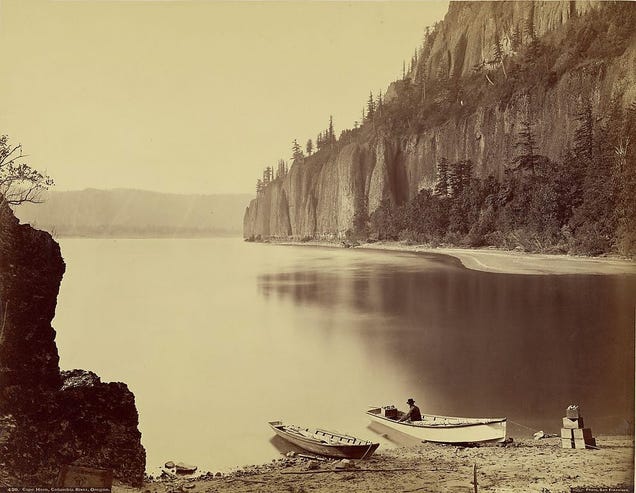
Cape Horn, Columbia River, Oregon photographed by Carleton Watkins in 1867 (Getty's Open Content Program)
Oregon has had more than its fair share of utopia community experiments. The definitive book on the topic is Eden Within Eden: Oregon's Utopia Heritage, where you'll find plenty of those utopian communities catalogued. But the book kind of misses the forest for the trees in not recognizing the fact that the entire state of Oregon was founded as a kind of racist's utopia. Race isn't explored in the otherwise excellent book.
Thousands would travel to Oregon in the 19th and 20th centuries, looking for their own versions of utopia. Some brave and noble people made the journey that would become cartoonishly immortalized for at least three generations now in the computer game Oregon Trail. But unfortunately for people of color, that pixelated utopia and vision of the promise land was explicitly designed to exclude them in real life.
This is not to pick on Oregon in particular as being particularly racist and terrible. The de facto exclusion of any non-white people from a number of businesses, institutions, and communities occurred throughout the Northeast, Midwest, and West. Oregon seems to have been just a bit more vocal and straightforward about it.
I spoke over the phone with Walidah Imarisha, an educator and expert on black history in Oregon and she was quick to explain that the state is only really exceptional in that it bothered to proclaim its goals of white supremacy so openly.
"What's useful about Oregon as a case study is that Oregon was bold enough to write it down," Imarisha told me. "But the same ideology, policies, and practices that shaped Oregon shaped every state in the Union, as well as this nation as a whole."
Today, while 13 percent of Americans are black, just 2 percent of Oregon's population is black. This is not some accident of history. It's a product of oppressive laws and everyday actions that deliberately excluded non-white people from a fair shot at living a life without additional obstacles being put in their way.
Life's hard enough as it is. But life as a person of color in Oregon would prove to be like trying to play Oregon Trail in a roomful of Klansmen while the computer lab is on fire.
The Messy Birth of Oregon
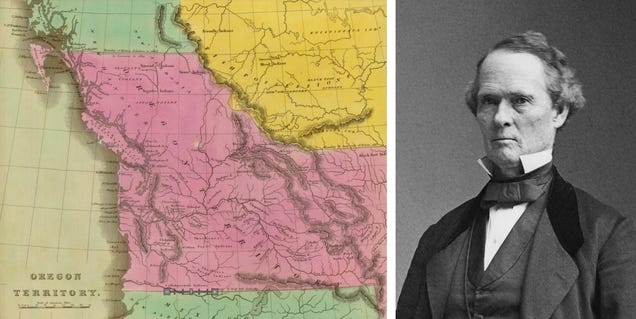
2
Oregon territorial map from 1840 (David Rumsey) Joseph Lane, the first territorial governor of Oregon (Wikipedia)
The question of whether Oregon should allow slavery dates back to at least the 1840s. The majority of Oregonians (which is to say the territory's new white residents who were systematically and sometimes violently oppressing its Native peoples) opposed slavery. But they also didn't want to live anywhere near anyone who wasn't white.
Even before it was a state, those in power in Oregon were trying to keep out non-white people. In the summer of 1844, for example, the Legislative Committee passed a provision that said any free black people who were in the state would be subject to flogging if they didn't leave within two years. The floggings were supposed to continue every six months until they left the territory. That provision was revised in December of 1845 to removed the flogging part. Instead, free black people who remained would be offered up "publicly for hire" to any white person who would remove them from the territory.
It seems to me unclear if that provision meant that free blacks would be auctioned off as slaves to people who were on their way out of Oregon. But one thing is clear: the territorial statutes would become irrelevant the following decade when Oregon would formally write its constitution. And that document was no more generous to the tiny black population.
The legislative founders of Oregon weren't exactly the cream of the crop as statesmen. Many of the sixty men who drafted the state's constitution loved to ramble on for hours making bold speeches about minor points of order. One significant subject of debate was how long members of the new government should be allowed to debate for. One particularly long-winded gentleman complained that he was just getting warmed up after 45 minutes.
These guys had plenty to say, but when it came to actually writing a constitution, they were pretty damn lazy. In fact, 172 of the document's 185 sections were directly plagiarized from the constitutions of other states like Ohio and Indiana.
The original parts? As David Schuman explains in his 1995 paper The Creation of the Oregon Constitution, they fell into two camps: limits on state spending and forms of racial exclusion. Somewhat ironically, the racial exclusion sections were included in an article called the Bill of Rights.
The constitution was put to a popular vote in the state in 1857 and included two referendums that were to be voted on independently. The first was whether they should reject slavery. Roughly 75 percent of voters opted to reject the adoption of slavery. The second measure was whether or not to exclude black people from the state. About 89 percent of voters cast their vote in favor of excluding black and mixed race people from the state. And thus, the exclusionary aspects of the state constitution were adopted.
The resulting Article 1, Section 35 of the Oregon state constitution:
No free negro, or mulatto, not residing in this State at the time of the adoption of this Constitution, shall come, reside, or be within this State, or hold any real estate, or make any contracts, or maintain any suit therein; and the Legislative Assembly shall provide by penal laws, for the removal, by public officers, of all such negroes, and mulattoes, and for their effectual exclusion from the State, and for the punishment of persons who shall bring them into the state, or employ, or harbor them.
The voters who overwhelmingly embraced this exclusion rationalized it not as blind hate, but as a progressive move that was simply keeping their new land "pure." Utopia often means starting from scratch, and just as often it means excluding undesirables.
As one "pioneer" voter who would later become a Republican state senator and a member of the U.S. House explained at a reunion in 1898:
Some believers in the doctrine of abstract human rights interpret this vote against admission of free negroes as an exhibition of prejudices which prevailed agains the African who was not a slave, but I have never so regarded it. It was largely an expression against any mingling of the white with any of the other races, and upon a theory that as we had yet no considerable representation of other races in our midst, we should do nothing to encourage their introduction. We were building a new state on virgin ground; it's people believed it should encourage only the best elements to come to us, and discourage others.
This language about virgin ground and "the best elements," burned into law in the new state, was used as a recruitment tool for other white Americans in the latter half of the 19th century — many of whom were white "refugees" from the south who were fleeing the dissolution of slavery.
"If you look at some of the recruiting materials, in essence they're saying come and build the kind of white homeland, the kind of white utopia that you dream of," Imarisha said. "Other communities of color were also controlled, not with exclusion laws, but the populations were kept purposefully small because the idea behind it was about creating explicitly a white homeland."
Technically the state's exclusion laws were superseded by federal law after the Fourteenth Amendment was adopted. But Oregon had a rather complicated relationship with that particular Amendment. Having ratified it in 1866, the state then rescinded its ratification when a more racist state government took control in 1868. The move was more symbolic than anything, but Oregon gave the sign that it wasn't on board with racial equality. Astoundingly, it wouldn't be until 1973 (and with very little fanfare) that activists would get the state to ratify the Fourteenth Amendment yet again.
Naturally, the state's quest for an all-white utopia also included the oppression of other groups — especially those of Chinese and Japanese descent. Though Asian people were not specifically called out in Oregon's constitutional exclusion laws, the white people of many towns large and small did their best to drive out non-white people any time they got the chance.
As just one example, the white people of La Grande burned that city's Chinatown to the ground in 1893. The Chinese residents fled, with some people getting on the first train out. But some Chinese residents weren't about to be intimidated and set up camp nearby. This wasn't enough for the hateful mobs of La Grande, who broke up the camp and forced anyone remaining to get on trains out of town.
These efforts were decentralized and not officially sanctioned by the state. But as the 1910s and 20s would roll around, a new domestic terror group would re-emerge to expel, harass, and brutalize anyone who wasn't "100 percent American." Some pioneers of the era weren't going to stand for it.
